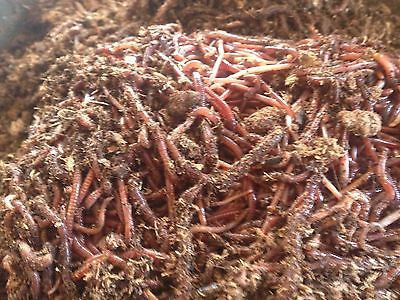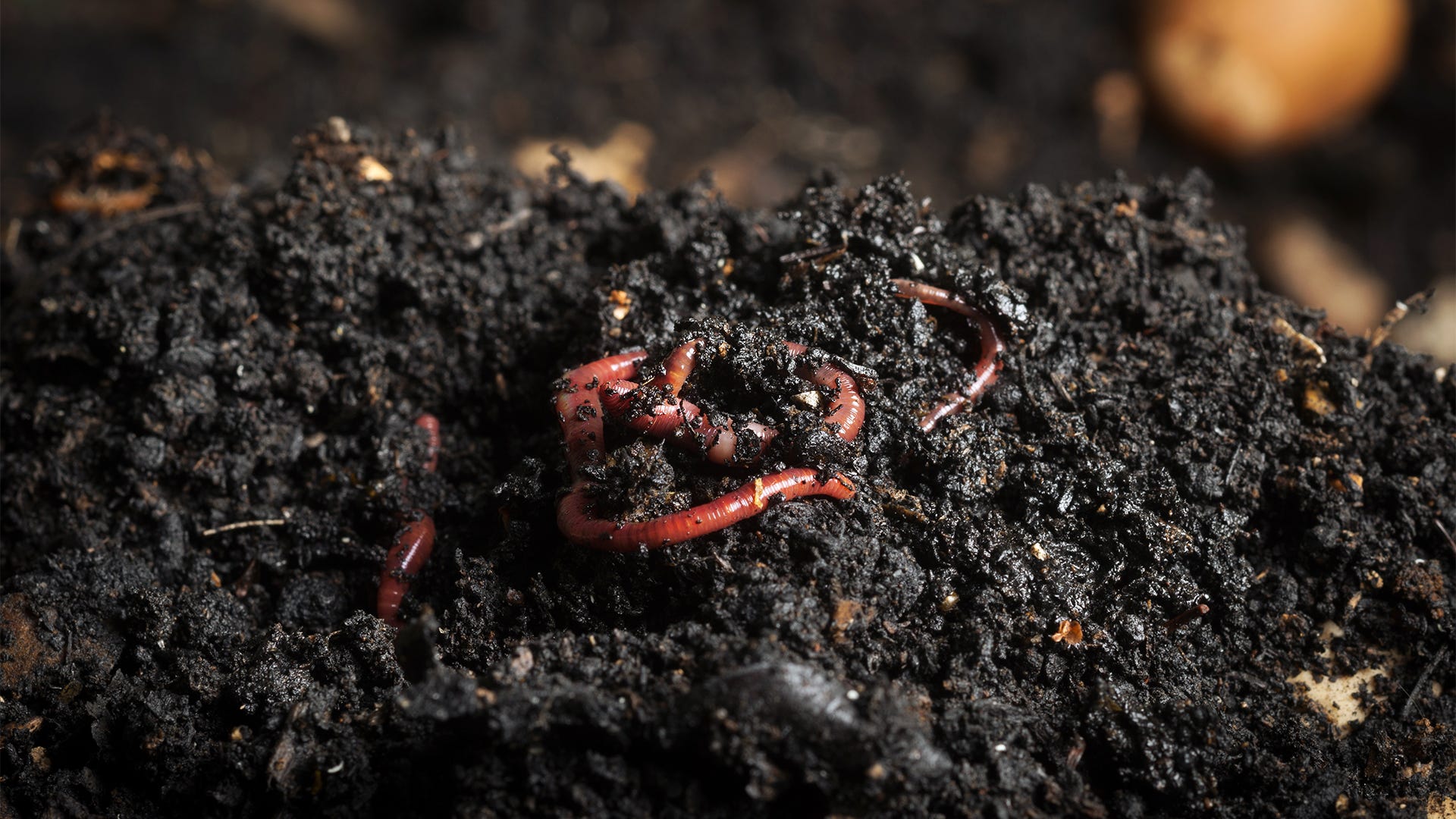Taking Full Advantage Of the Benefits of Red Wiggler Worms: A Comprehensive Handbook for Home Gardeners and Urban Farmers
In the realm of sustainable horticulture methods, red wiggler worms stand as unhonored heroes, silently changing natural waste right into nutrient-rich spreadings that can function marvels for dirt wellness. By discovering the details of how to effectively care for and make the most of the benefits of red wiggler worms, individuals can unlock a wealth of opportunities for boosting the sustainability and performance of their horticulture undertakings.
Recognizing Red Wiggler Worms
Red Wiggler worms, renowned for their effective composting capabilities, are a varieties of earthworms extensively utilized in vermiculture practices. These worms, scientifically understood as Eisenia fetida, grow in decomposing natural product, making them perfect candidates for composting.
One secret quality of Red Wiggler worms is their reproductive rate. These hermaphroditic animals have both male and female reproductive organs, enabling them to duplicate quickly under desirable problems. A mature Red Wiggler can produce numerous offspring in a short duration, ensuring a stable population within a composting system.

Establishing a Worm Bin
When developing a worm bin for vermiculture objectives, appropriate prep work and focus to detail are necessary for creating a favorable setting for Red Wiggler worms. Begin by choosing an ideal container for your worm container. This can be a plastic or wooden container with a lid to preserve wetness degrees and shield the worms from light. Ensure that the container has water drainage holes at the bottom to avoid waterlogging.

Area the worm container in an amazing, dark location far from direct sunshine and extreme temperatures. Regularly check the dampness levels, including water if the bed linens feels half-cracked or completely dry. Feed the worms a balanced diet regimen of fruit and vegetable scraps, avoiding citrus fruits, onions, and spicy foods. By adhering to these actions, you can establish a thriving worm container that will effectively process natural waste right into nutrient-rich vermicompost for your garden.
Feeding and Maintaining Worms
Making sure a balanced and healthy diet plan is essential for the health and wellness and efficiency of Red Wiggler worms in a vermiculture system. Red Wigglers are starved eaters, with the ability of consuming their own body weight in natural issue daily. To maintain a successful worm populace, it is important to give them with a selection of food scraps such as vegetables and fruit peels, coffee premises, tea bags, and smashed eggshells. Nonetheless, it is necessary to stay clear of feeding them citrus fruits, onions, garlic, milk products, meat, and oily foods as these can be damaging to the worms or create undesirable odors in the bin.
Proper dampness levels are additionally critical for the well-being of Red Wiggler worms. The bed linens ought to feel like a wet sponge, giving enough moisture for the worms to take a breath with their skin. On a regular basis inspect the moisture degrees and adjust by adding water or dry bedding product as needed. Additionally, maintaining correct temperature level conditions between 55-77 ° F(13-25 ° C )will certainly guarantee optimum worm task and reproduction. By vigilantly monitoring their diet, dampness, and ecological problems, home gardeners and urban farmers can sustain a efficient and healthy and balanced Red Wiggler worm populace for composting objectives.
Gathering Worm Spreadings
To efficiently remove nutrient-rich worm spreadings from the vermicompost, a systematic harvesting process is crucial for making best use of the composting benefits. Red Wiggler Worms. The primary step in gathering worm castings is to motivate the worms to migrate away of the bin. This can be accomplished by positioning fresh food scraps on one side and pop over to this web-site leaving the other check my blog side uninterrupted for a couple of days. As soon as the bulk of worms have moved to the side with fresh food, the spreadings can be collected from the opposite side.
After the castings have been gathered, it is necessary to divide any kind of remaining worms from the castings to prevent hurting them throughout storage or application. One effective method is to produce cone-shaped stacks of castings under brilliant light. Worms will instinctively move far from the light, permitting for very easy splitting up and removal.
Last but not least, the gathered worm spreadings must be kept in an awesome, dark, and completely dry location to maintain their quality and performance as a nutrient-rich soil amendment. By adhering to these actions, home garden enthusiasts and urban farmers can make best use of the benefits of red wiggler worms in their vermicomposting systems.
Utilizing Worm Castings in Horticulture
The unification of nutrient-rich worm spreadings right into garden soil can substantially enhance plant growth and total soil health and wellness. Worm spreadings, likewise referred to as vermicast, are a natural fertilizer created by red wiggler worms as they damage down raw material. These castings are abundant in important nutrients like nitrogen, phosphorus, potassium, and beneficial germs that promote plant growth and improve soil structure.
When using worm castings in horticulture, it is vital to mix them completely right into the dirt or utilize them as a leading clothing around plants. The slow-release nature of worm spreadings guarantees a stable supply of nutrients to plants with time, reducing the danger of nutrient leaching and promoting long-lasting dirt fertility. In addition, worm spreadings assist improve dirt aeration, water retention, and microbial task, producing a healthy and balanced setting for plant roots to flourish.

Conclusion
To conclude, the use of red wiggler worms in home gardening and metropolitan farming can dramatically benefit dirt wellness and plant growth. By understanding how to establish up and keep a worm container, feed the worms appropriately, and harvest their nutrient-rich castings, garden enthusiasts can make best use of the advantages of these earthworms. Integrating worm castings into gardening methods can improve dirt fertility and general plant performance. Overall, red wiggler worms use a sustainable and reliable option for enhancing yard and farm returns.
In the realm of sustainable gardening techniques, red wiggler worms stand as unhonored heroes, silently transforming organic waste right into nutrient-rich castings that can work wonders for dirt wellness.When developing a worm bin for vermiculture functions, correct preparation and interest to information are vital for producing a helpful setting for Red Wiggler worms. The initial action in harvesting worm castings is to encourage the worms to move to one side of the bin. Worm castings, additionally understood as vermicast, are an all-natural fertilizer produced by red wiggler worms as they damage down natural matter. By comprehending just how to establish up and keep a worm container, feed the worms correctly, and harvest their nutrient-rich spreadings, gardeners can optimize the benefits of these earthworms.